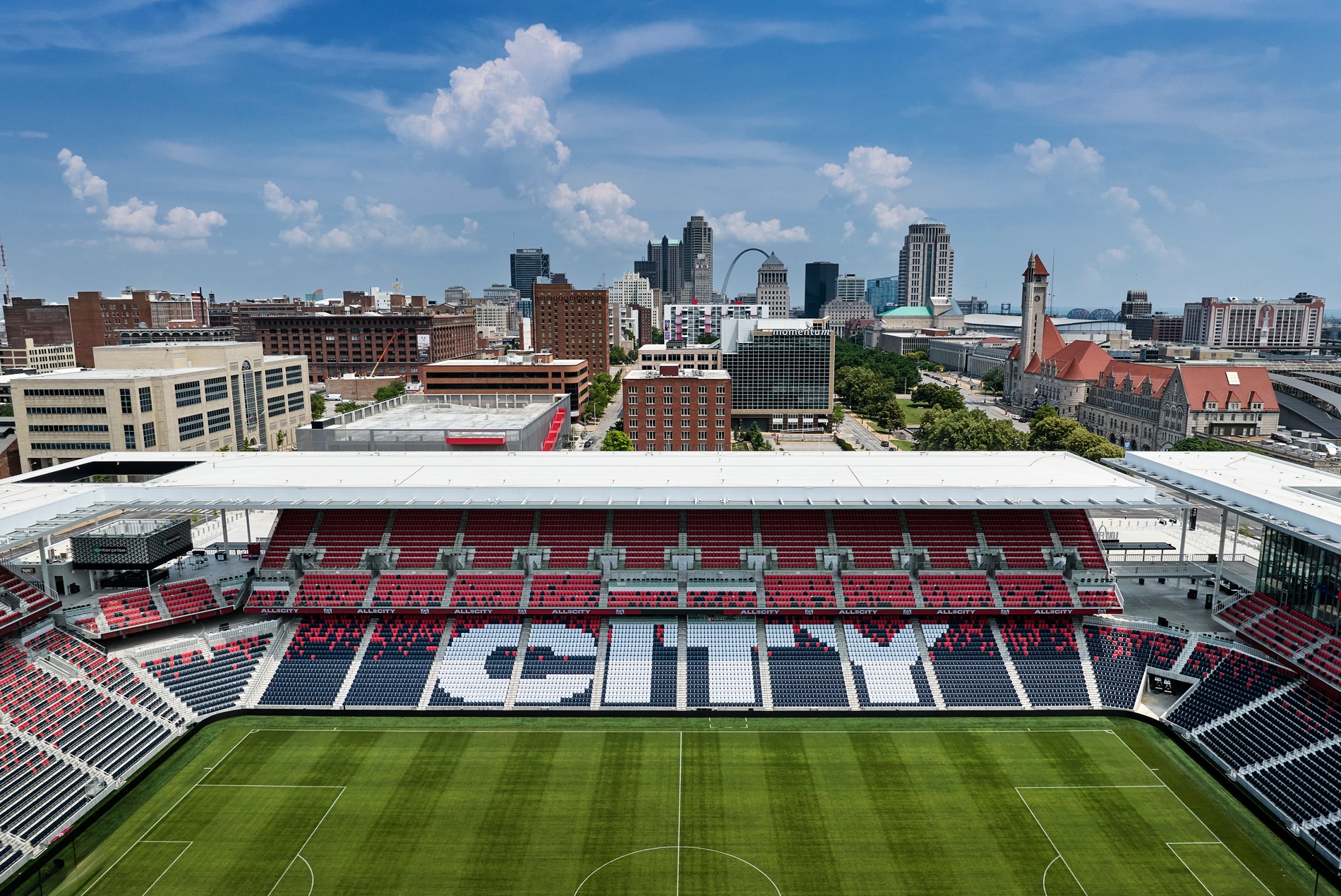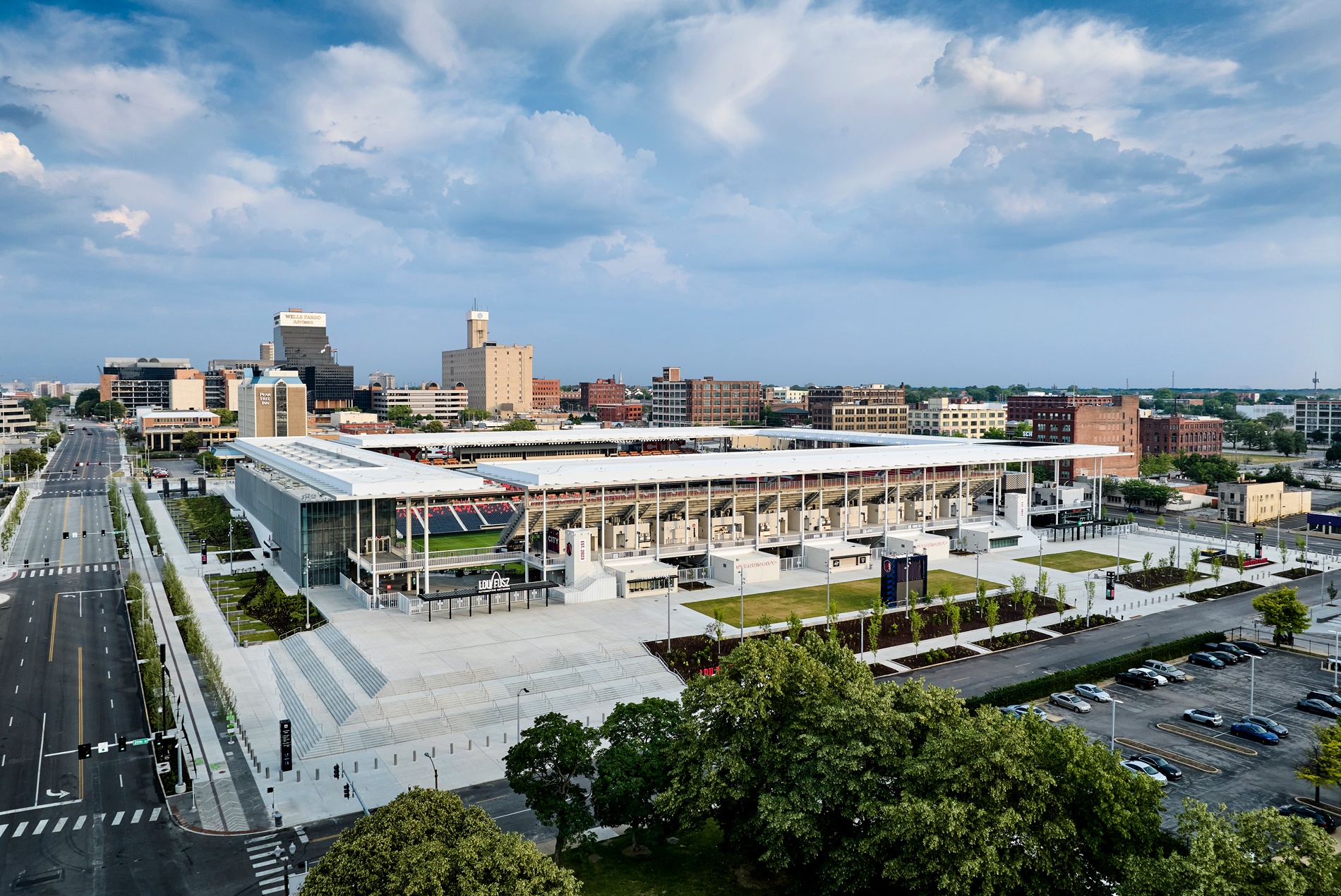Sports Business Journal�s feature story on CITYPARK, home of Major League Soccer�s St. Louis CITY SC, highlights the stadium�s quest to capture the essence of the city by design. Bret McCormick shares what makes the league�s newest stadium, designed...
Sports Business Journal�s feature story on CITYPARK, home of Major League Soccer�s St. Louis CITY SC, highlights the stadium�s quest to capture the essence of the city by design. Bret McCormick shares what makes the league�s newest stadium, designed by HOK and Snow Kreilich, unique.
Excerpted from Sports Business Journal:
The stadium�reflects a club that knew to localize the venue in every way possible, starting with food and drink. When St. Louis City asked fans to suggest local restaurants to consider including in the stadium�s F&B program, it received 10,000 submissions from the public.
Technology was equally important. The stadium is truly post-pandemic; it�s never accepted a paper dollar or ticket. The club took advantage of its extra year of preparation � its first�MLS�season was bumped back one year to 2023 because of the pandemic � by incorporating more fan experience tech into�CITYPARK�s original design. But the club�s ownership group and executive team, drawing from its success in non-sports businesses that emphasized mobile and digital customer experiences, was already moving that way.
The result is a stadium that�s unique in many ways, certainly for MLS.
It�s the only club with its team business offices, training facility, team store and stadium located in a contiguous 31-acre setting amid a major city, all of which are connected to the same fiber internet network.

St. Louis City President and CEO Carolyn Kindle (community philanthropy), Chief Operating Officer and General Counsel Jason Thein (legal), and Lee Broughton (brand marketing) each had complementary business expertise but no sports experience prior to the soccer project. That ultimately influenced the club�s final stadium result and its first-year on-field success (the club won MLS�s Western Conference regular-season title) in positive ways, but it wasn�t immediately clear that the experiences would translate.
The leadership team brought an intense desire to make the stadium local and create a customer experience based around technology. Before the club even had employees, Kindle, Thein and Broughton created five design pillars to guide the stadium creation process:
Connection: To be artfully integrated and connected to the fabric of the neighborhood. Mobility: To move people efficiently with creative use of infrastructure and technology. Sport: To create a loud, proud, distinct home-field advantage. Training: To bring team HQ, practice fields and an academy to St. Louis. Experience: To bring 24/7/365 vitality to the neighborhood through architecture and public spaces that inspire.In early plans, the stadium sat south of Market Street on the site that now holds the training ground (which was formerly a highway underpass and, for decades before that, a historic African American neighborhood once home to famous composer Scott Joplin. HOK�s Eli Hoisington (co-CEO, design principal) first sketched out the idea of moving the stadium to the north side of Market Street. That shift, following the purchase of the land, enabled the St. Louis City SC complex to materialize: The stadium north of Market Street adjoined � under the road by a tunnel � to the training ground, team store, and recently opened team business office south of Market Street.
That enabled designers and engineers to stash critical back-of-house functions like generators, transformers and loading docks, creating a stadium with no backdoor, crucial for an urban setting to which fans arrive from all directions.

CITYPARK�might not have a front door, but it does have a massive yard.
Putting the stadium in the plot north of Market Street made room for the roughly 125,000-square-foot plaza, an open area on the stadium�s east side that the team has programmed robustly in its first season, whether with DJs, games, watch parties or as an open pre-match gathering space.
The nearly 12-acre stadium site features a 20-foot grade differential from northwest to southwest, which contributed to the two-concourse design on the east side, the only soccer-specific stadium in MLS with two levels of concourses. Fans entering the stadium from the west side descend onto the 360-degree traversable main concourse, while those entering from the east side (about 60% of fans on average) ascend to the main level.
The pitch sits 40 feet below street level and that depth, combined with the 121-foot-deep canopy more than amply covering the east stand of the stadium and four predominantly enclosed sides, traps crowd noise inside the venue.
There were two must-haves during design that Broughton fought to preserve, one being the expansive canopy and its soffit that�s reflective of both light and sound.
The second non-negotiable was leaving the stadium�s four corners open to the exterior for visual connection with the city and the surroundings. The sights from the southeast corner of the stadium include the Gateway Mall, a string of parks connecting�CityPark�to the Mississippi River, and the unmistakable shape of The Arch in the distance.
Read the entire Sports Business Journal article.
�
The post St. Louis� CITYPARK: A New Paradigm in Soccer Stadium Design appeared first on HOK.





